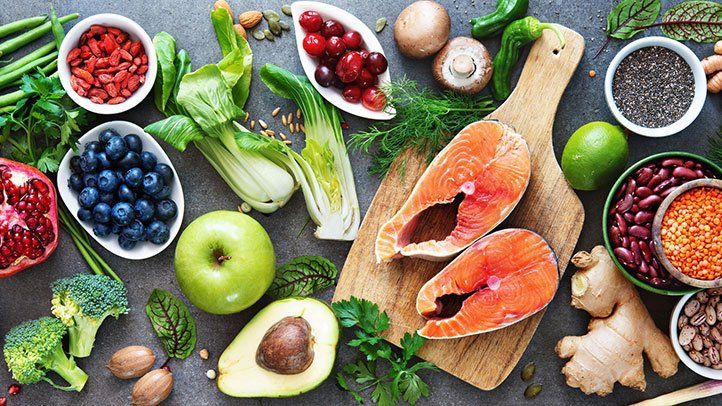I have often heard from clients and friends how complicated nutrition is. There are many mixed and sometimes misleading messages coming at us from a variety of sources: television, social media, magazines, fitness gurus, coworkers…
And as technology and research techniques become more advanced we have seen some modifications to the details embedded in nutrition messages but it really doesn’t have to be so complicated!
Here are a few basic nutrition tips that you can put in place today to help improve the health of you and your family
1. Eat more vegetables and whole fruit
Try shifting your plate ratio! Filling half your plate with vegetables and fruit instead of making meat/starch the star of the plate can help boost fibre and antioxidants while reducing saturated fat, trans fat, and total caloric intake
Frozen vegetables and fruit are a great alternative when fresh seasonal products are not practical. They are also great to keep on hand for quick and easy weeknight meals.
2. Choose whole grain options more often
Whole grain products contain more fibre than their “white” counterparts which helps you to feel fuller longer, and are better for blood sugar control (not to mention the digestive benefit)
For an easy whole grain swap, why not try quinoa in place of rice while making a stir fry or stuffed peppers
3. Practice mindful eating
If you are hungry but it is not time for a meal, have a healthy snack!
This may help you to avoid overeating at the next meal
If you are no longer hungry, stop eating! We need to shift away from the old habit of always clearing our plates by overeating. Save the extra and pack it for your lunch tomorrow!
4. Choose low fat dairy and leaner protein options
Low fat dairy options and leaner cuts of meat (eg fish, chicken) contain less saturated and trans fat than higher fat dairy and red meat
By decreasing your intake of saturated and trans fat you are also decreasing your risk of heart disease!
5. Choose plant based proteins at least a couple times a week
Beans, peas, lentils, nuts, and tofu are great heart healthy options
Try swapping ground beef for lentils in your next pasta sauce, chili, or shepherds pie for a tasty and healthy alternative
6. Make water your drink of choice most often
Juice, pop, and other sweet drinks may be tempting but did you know that one can of pop contains about 10 teaspoons of sugar?
Water doesn’t have to be boring! For a refreshing twist, try adding fresh or frozen fruit or cucumber slices to your glass or water bottle. Bonus: Keeping a pitcher of visually appealing, tasty water in the fridge can help your kids get more water too!
7.Shake the salt habit
Homemade recipes usually have less sodium than pre-made alternatives. Whenever possible, cook at home.
If using packaged/convenience foods (because let’s be real, it isn’t always possible to make a perfect healthy meal every day; life happens!) Try and choose items with less than 10% DV for sodium
8. Get kids in the kitchen and eat together!
Getting kids in the kitchen and exposed to a variety of new foods early on helps build a good relationship with food. Even from a young age children can help stir, peel, and wash
Try slowing down and eating meals as a family (or even with your social circle or coworkers) at least a couple times a week. Shared meals and conversation are great for mental health.
9. Become a label reader
Use the percentage Daily Value (%DV) for a quick scan:
Less than 5% is a little – This is helpful if you want to decrease saturated/trans fat or sodium intake
More than 15% is a lot – This is helpful if you want to increase your fibre, iron, or calcium intake.
10. Follow the 80/20 rule
Strict dieting and obsessing over healthy eating can lead to social isolation or disordered eating patterns. If you eat well and exercise most of the time, then you should also be able to enjoy some of life’s simple pleasures like baking cookies with your kids or enjoying a cocktail on the patio




